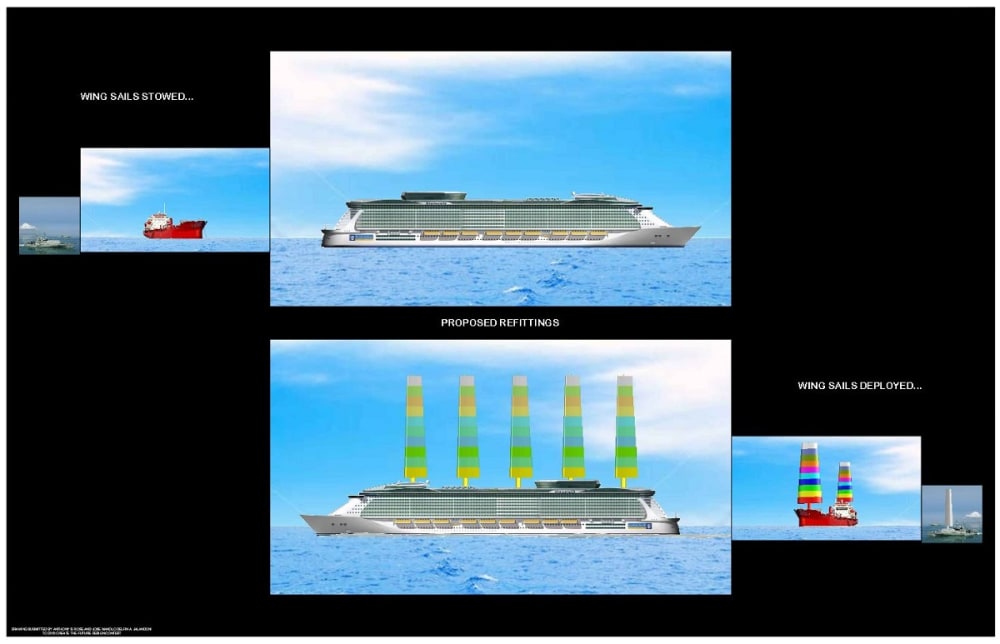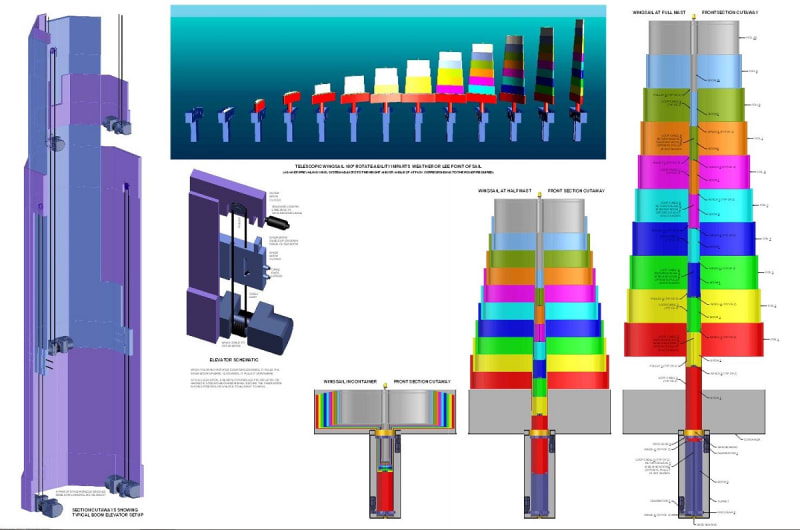
Wing sails generate greater power and provide easier control than any other type of sail in existence and are getting into wider use where their current designs are applicable – especially in sailboat races. With their higher efficiency and better handling in harnessing available wind for propulsion, wing-sailed boats, given similar hullforms, are faster and more maneuverable and are, consequently, dominating the field versus their soft-sailed rivals.
But, despite the obvious benefits that are attainable with them, particularly where it comes to operating economy – requiring only wind energy instead of fossil-fueled engines to propel vessels – we still have to see them utilized in the shipping industry.
And why is likely because of a present drawback: they generally are huge, tall and fixed-in-place, and therefore can’t readily be taken out of the way if need be, which is a must in certain situations;
a. A sail-equipped ship that cannot take it down in a storm is in big trouble.
b. If becalmed, a motorized vessel with a sail that stays up will encounter increased drag while traveling.
c. Even in port, those rigid wingsails that cannot come down keep working. Granting they can be furled, still, their masts normally remain standing, and for, say, a freighter with boom cranes to move cargo, the mast(s) will be obstructive.
If for no other then, these are some of the reasons that have held merchant shipping from adapting to wingsails until now.
This new design eliminates these problems.
This model;
- telescopes (extends, retracts),
- rotates 360 degrees in its turret,
- adjusts in height to the power required,
- adjusts to the angle of attack for the power required,
- self-supports,
- has simple elevator & turret mechanisms,
- collapses to stow in its container,
- is modular.
Made strong but lightweight, it can be installed in vessels with appropriate ballasting and which are furbished with receptacles to accept it. And thus so equipped, ships can ply certain portions of their routes windborne, furthering their range and saving on fuel, thereby also reducing greenhousing emissions.
If it can be manufactured to cost no more than an equivalently rated marine engine, it will recover the investment in it in terms of fuel savings in the short run.
Video
-
Awards
-
 2013 Top 100 Entries
2013 Top 100 Entries
Like this entry?
-
About the Entrant
- Name:Jose Manolo Delfin Jalandoni
- Type of entry:teamTeam members:Anthony S. Rose
Jose Manolo Delfin A. Jalandoni - Software used for this entry:AutoCAD 2010
- Patent status:none








